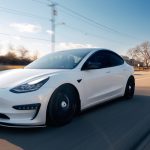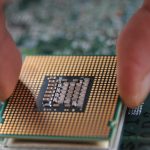Tesla is streamlining its smart driving system names for its Chinese customers, removing the “FSD” designation from its vehicle ordering platforms. This modification reflects the company’s strategic adjustments in its branding approach within the region. Industry analysts have taken notice of these changes, highlighting Tesla’s efforts to possibly align better with local market preferences and regulatory standards.
Past reports indicate that Tesla has been gradually adapting its offerings in China, responding to both consumer feedback and evolving transportation regulations. Earlier iterations of Tesla’s autonomous systems were marketed under the “FSD” label, but recent rebranding suggests a shift towards more simplified and possibly regulation-compliant terminology. This move may signify Tesla’s intention to maintain a competitive edge while navigating the complex automotive landscape in China.
Why Did Tesla Change the Naming of Its Driving Systems?
Tesla has not provided an official explanation for the renaming of its driving systems in China. However, the adjustment might be a precautionary measure in anticipation of future regulatory developments or to better cater to the expectations of the Chinese market. The omission of “FSD” could indicate a focus on enhancing the perceived safety and reliability of their assisted driving technologies without overpromising autonomous capabilities.
How Do the Updated Names Affect Tesla’s Product Offerings?
Despite the name changes, the functionalities of Tesla’s driving systems remain consistent. The RMB 64,000 package is now called “Intelligent Assisted Driving,” while the mid-tier RMB 32,000 system has been renamed “Enhanced Assisted Driving.” The basic Autopilot system has also been rebranded to “Basic Assisted Driving,” ensuring that customers are clear about the features available without the potentially misleading “Full Self-Driving” terminology.
What Are the Implications for Tesla’s Autonomous Technology in China?
The rebranding suggests that Tesla is proceeding cautiously with its autonomous technology in China. Current systems are advanced but still require driver supervision, indicating that fully unsupervised self-driving capabilities are not yet available. This strategic naming could pave the way for future enhancements, where the “Full Self-Driving” term might be reinstated once Tesla achieves a higher level of autonomy that meets regulatory approval.
Overall, Tesla’s renaming of its assisted driving packages in China reflects a nuanced approach to branding and product positioning in a key international market. By maintaining consistent functionality while adjusting the nomenclature, Tesla ensures clarity and regulatory compliance, which are crucial for sustaining its market presence and consumer trust in China.










